Step away from the sneeze guard, friend.
We know buffets can feel like the promised land—endless plates, bottomless options, and the sweet, sweet thrill of not being judged for going back for a fourth helping of mashed potatoes.
But lurking behind those shiny heat lamps and questionably clean serving spoons is a dark underbelly of food safety violations just waiting to turn your all-you-can-eat dreams into an all-night stomach disaster.
Sure, you want to get your money’s worth. But is it really worth it if it ends with you curled up in bed Googling “how long does food poisoning last” at 3 a.m.?
Some buffet staples are totally fine—bless those fresh rolls and the iceberg lettuce that never wilts—but others? They’re a ticking time bomb of bacteria, soggy sadness, and regret.
So grab a plate, but read this first. Here are 16 things you should absolutely never eat at a buffet—unless you like to live dangerously (and possibly near a toilet).
1. Raw Oysters
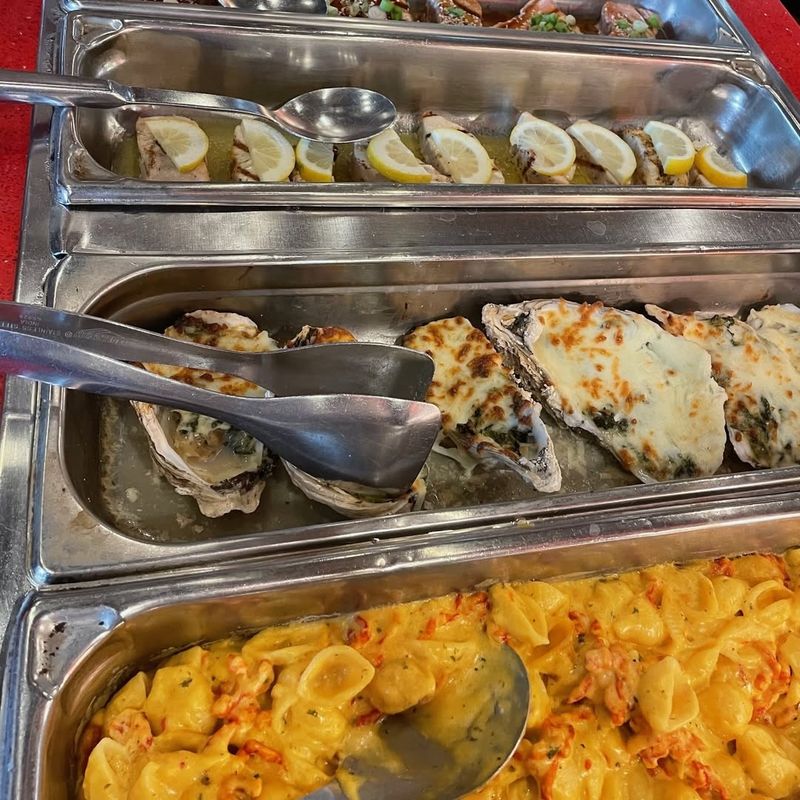
When you’re at a buffet, raw oysters might seem like a luxurious choice. However, unless you’re dining at an upscale seafood haven where freshness is guaranteed, these slippery shellfish can harbor harmful bacteria.
Buffets often struggle to maintain the necessary cold temperatures for raw oysters, making them a risky choice. Eating these can lead to unpleasant consequences, such as food poisoning.
The potential for bacteria like Vibrio is higher in raw shellfish like oysters, especially if they aren’t kept at the right temperature. It’s wiser to enjoy cooked seafood options instead. In warmer climates or during peak times, the risk increases as oysters sit out longer.
Always consider the source and freshness before indulging. When in doubt, skip the oysters and opt for something safer and still satisfying from the buffet spread.
2. Sushi with Raw Fish
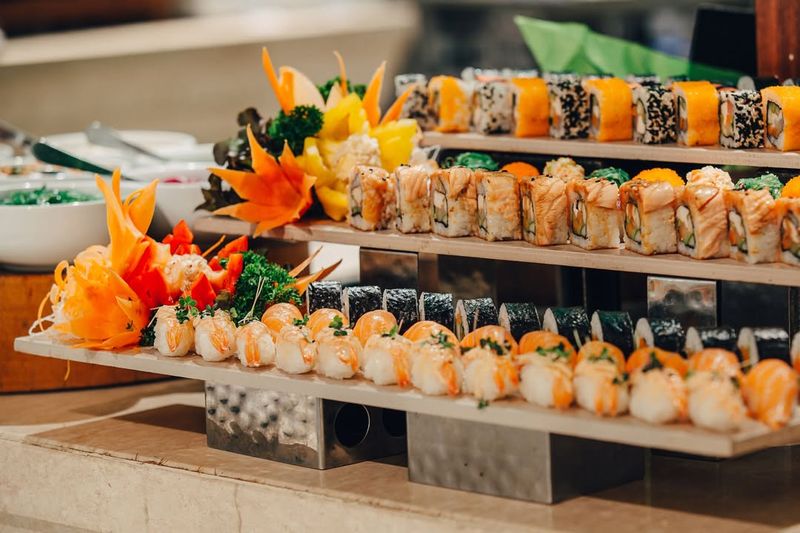
That colorful sushi platter at the buffet can be quite inviting, but sushi with raw fish is not always your safest bet.
If it’s been left out for a while, any spicy tuna roll becomes a hub for bacteria like Salmonella or E. coli. The temperature control at buffets can be unreliable, posing potential health risks. Instead, consider veggie rolls or those made with cooked fish, which provide a safer alternative without sacrificing flavor.
Buffets might not always meet the stringent standards required to keep raw fish safe. A high turnover rate of sushi rolls ensures freshness, but it’s often a gamble. Examine how popular the sushi section is before indulging.
Ultimately, it’s better to err on the side of caution and opt for cooked or vegetarian sushi options.
3. Rare or Undercooked Meats
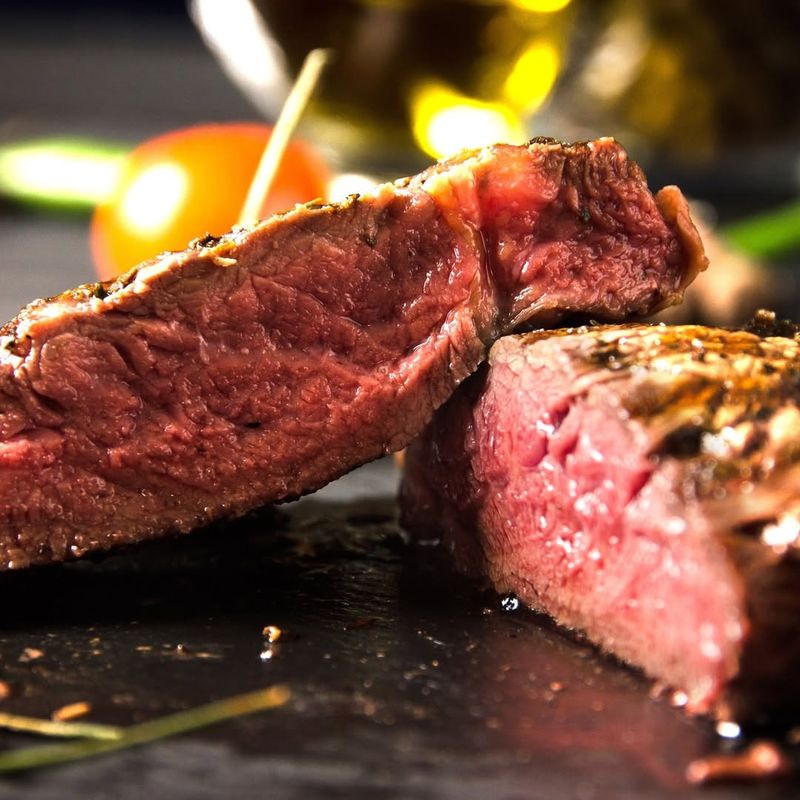
The appeal of a juicy, medium-rare steak can be hard to resist. However, rare or undercooked meats at a buffet should raise caution flags.
Buffets often struggle to maintain consistent internal temperatures, making it difficult to ensure meats are cooked safely. This can lead to potential exposure to harmful bacteria, such as E. coli or Salmonella.
Meats that aren’t cooked to proper temperatures might look appealing but can be dangerous when not monitored closely. Buffets rarely offer made-to-order cooking, which further complicates things. Opt for meats that are cooked thoroughly to avoid any unpleasant surprises.
It’s better to enjoy a well-cooked dish than take the risk with undercooked meats that could spoil your meal and health.
4. Creamy Salads (Tuna, Egg, Potato)
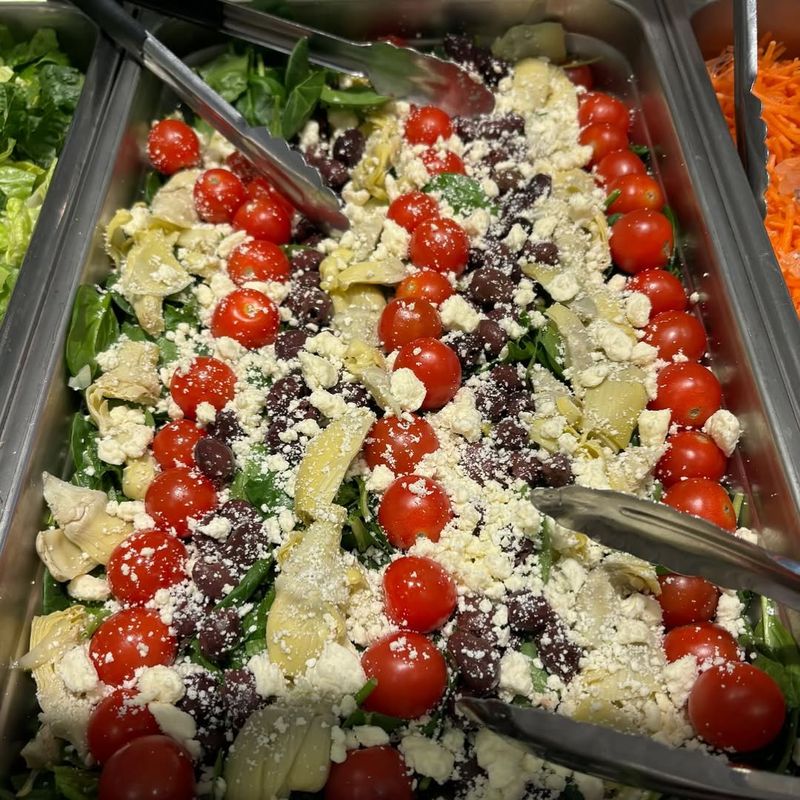
Creamy salads like tuna, egg, or potato are often drenched in mayonnaise and left exposed at buffets. This combination makes them a breeding ground for bacteria, especially in warm environments.
If they’ve been sitting out for hours, the risk of food poisoning increases significantly. The creamy texture might be tempting, but unless these salads are kept properly chilled, they pose a health hazard. Mayo-based dishes are particularly sensitive to temperature changes.
Consider opting for salads with vinaigrette dressing instead. These are typically less risky and can still offer a refreshing taste. The allure of creamy salads isn’t worth the potential upset stomach or worse.
5. Pre-Cut Fruit
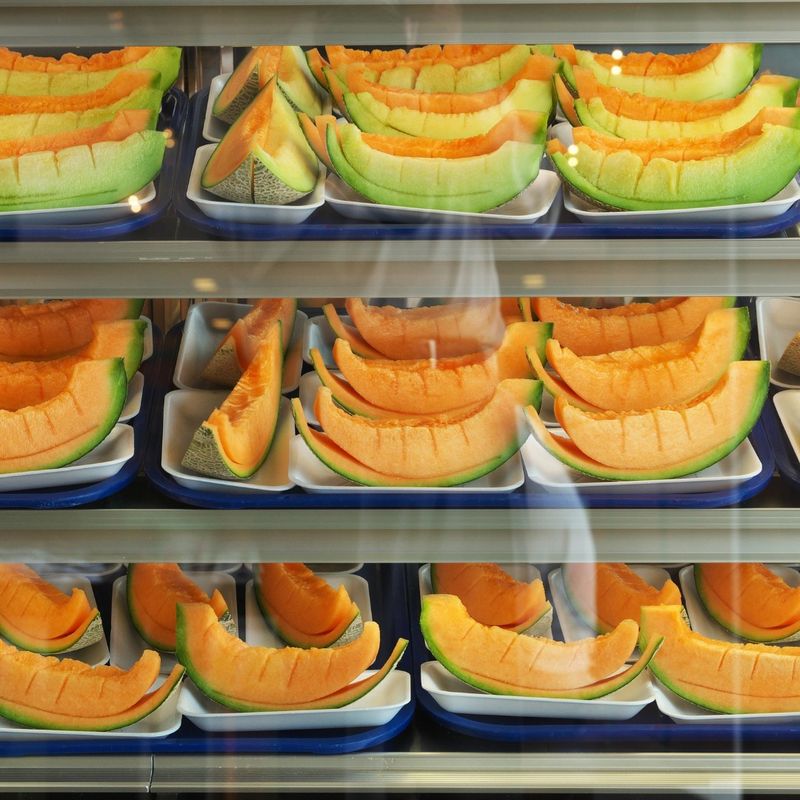
At first glance, a platter of pre-cut fruit seems like a healthy buffet choice. Yet, these seemingly innocent slices can quickly become a breeding ground for bacteria.
Once fruit is cut, it becomes more susceptible to contamination, especially if not kept cold. Buffets often display fruit without proper refrigeration, making it a risky choice. The cut edges expose more surface area to potential germs, and the longer they sit out, the higher the risk.
Choose whole fruits you can peel yourself or opt for freshly prepared fruit salads kept on ice. This simple switch can help you avoid unnecessary health risks while still enjoying nature’s sweetness.
Remember, freshness and temperature are key when it comes to buffet fruit options.
6. Soft-Serve Ice Cream (When Self-Serve)

Soft-serve ice cream machines at buffets can be deceptively charming with their swirly cones. However, these machines are not always cleaned as regularly as they should be, making them a hotspot for germs.
The handles, touched by countless hands, become germ magnets. Additionally, the internal parts of the machine can harbor bacteria if not properly maintained. This turns a delightful treat into a potential health risk, especially for those with sensitive stomachs.
Consider opting for pre-packaged ice cream instead, which is less likely to be contaminated. Or, enjoy a dessert that doesn’t rely on shared equipment.
It’s all about minimizing risk while still savoring a sweet finish to your buffet experience.
7. Mussels or Clams
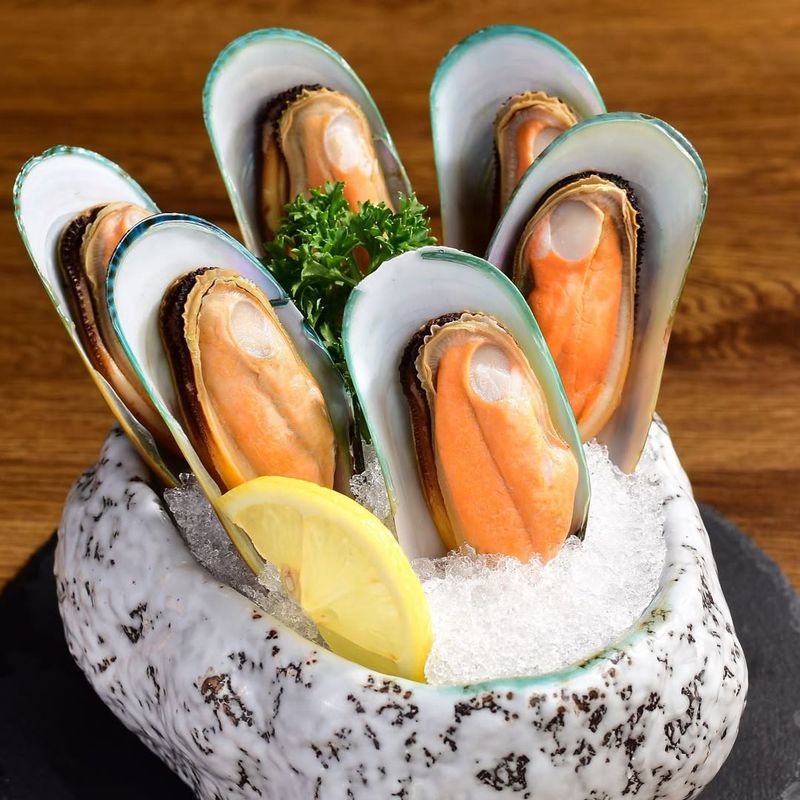
Mussels and clams can be a delightful addition to any seafood lover’s plate, but they come with their own set of risks at buffets. These shellfish are particularly sensitive to temperature and can harbor bacteria if not kept properly.
Even if just one shellfish is spoiled, it can lead to severe food poisoning, which is why their freshness is crucial. Buffets with slow turnover rates should be approached with caution when it comes to these items.
It’s often safer to enjoy mussels and clams from a reputable seafood restaurant rather than risking it at a buffet. If you must indulge, ensure they are piping hot or opt for a different seafood option that’s less risky.
8. Fried Foods That Look Limp
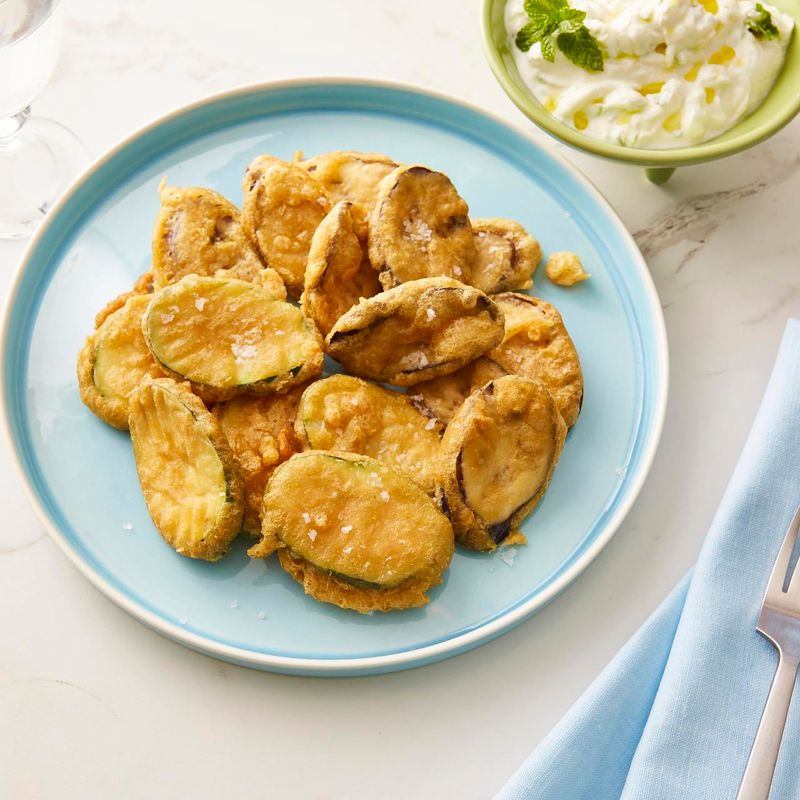
Crispy fried foods at a buffet can be incredibly tempting, but when they start looking limp and soggy, it’s a sign they’ve been out too long. Over time, fried items lose their texture and flavor, turning them into oil-soaked disappointments.
This not only affects the taste but also the safety of the food. Soggy fried foods are more likely to have been sitting in the ‘danger zone’ of temperature, where bacteria thrive.
Instead, seek out freshly replenished trays or stick to baked alternatives. The allure of a crispy fry isn’t worth the potential upset stomach from fried food that’s been sitting too long. Freshness is key, even with indulgent treats like these.
9. Items in the “Danger Zone”
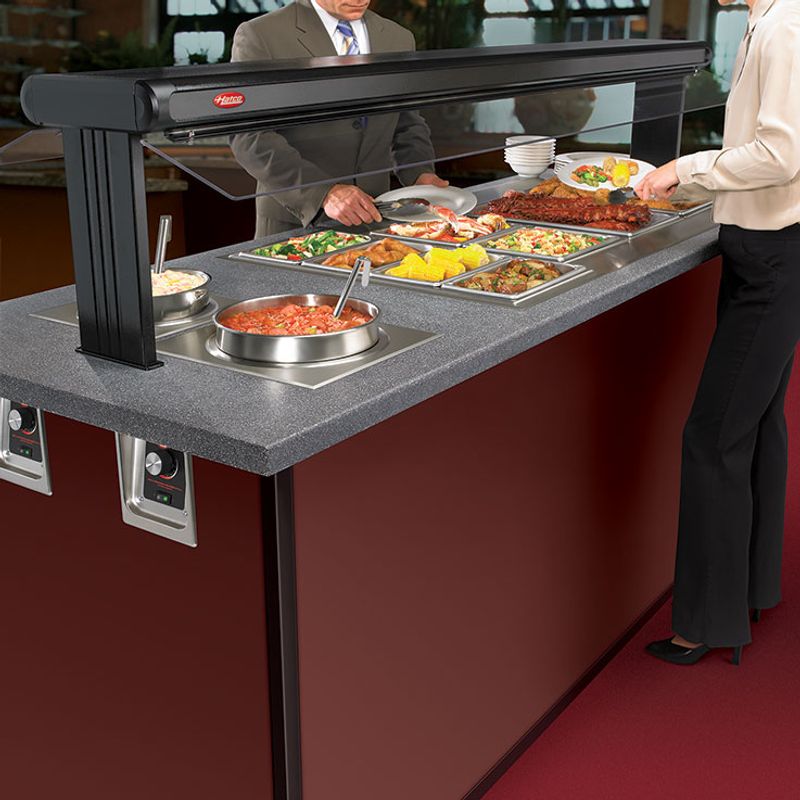
Buffets can be a playground for bacteria, particularly when food is left in the ‘danger zone’ of 40°F to 140°F.
This lukewarm temperature range is where bacteria multiply rapidly, increasing the risk of foodborne illnesses. If a dish is neither hot nor cold, it’s best to skip it. This applies to all types of food, from meats to salads.
Ensuring your food is properly heated or chilled is a simple yet effective way to safeguard your dining experience. When surveying the buffet, prioritize dishes that are steaming hot or well-chilled on ice.
It’s a small step that can make a big difference in maintaining your health while enjoying buffet offerings.
10. Deviled Eggs
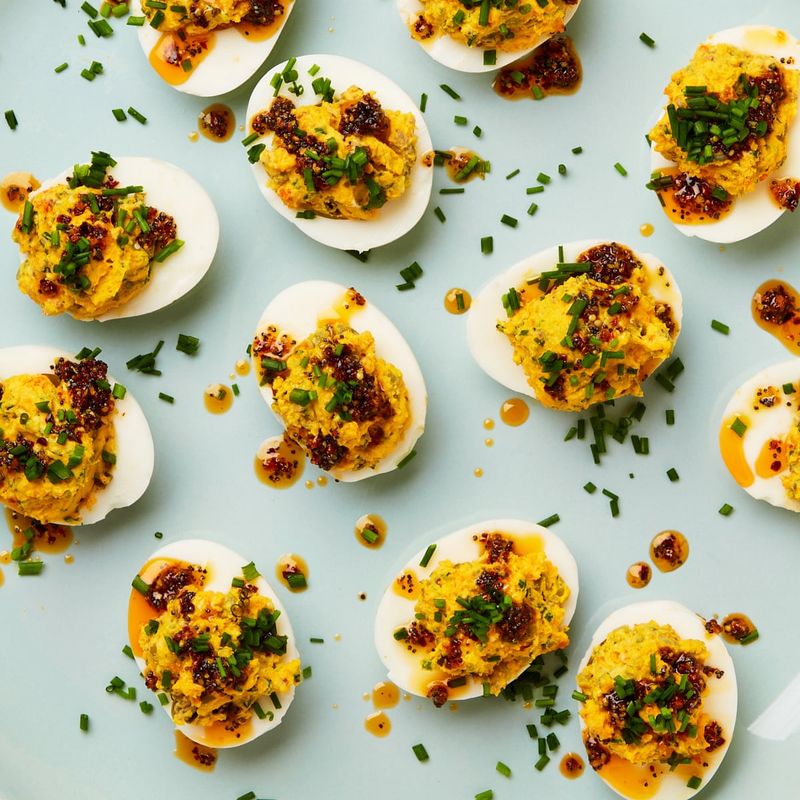
Deviled eggs can be a classic party favorite, but at a buffet, they are more of a gamble. Eggs combined with mayonnaise create a concoction that spoils quickly, especially when left out for extended periods.
The potential for bacteria like Salmonella increases with time and temperature exposure. This makes deviled eggs a less-than-ideal choice at a buffet, where you can’t be sure of how long they’ve been out.
If you’re craving eggs, consider opting for a freshly made omelet or scramble, which can offer the same protein fix without the spoilage risk. Remember, food safety is paramount, even when faced with seemingly harmless dishes like deviled eggs.
11. Soft Cheeses

Soft cheeses like brie, camembert, and blue cheese require meticulous temperature control to remain safe. At buffets, these cheeses are often left out, allowing bacteria to flourish rapidly in their creamy interiors.
Not only does this affect taste, but it also increases the risk of foodborne illness. Soft cheeses can spoil faster than their harder counterparts, making them a risky choice when not properly chilled.
If you’re a cheese lover, opt for harder varieties or those kept on ice. They are less susceptible to bacterial growth and can still satisfy your cheese cravings without compromising your health.
12. Stuff with Mystery Sauces
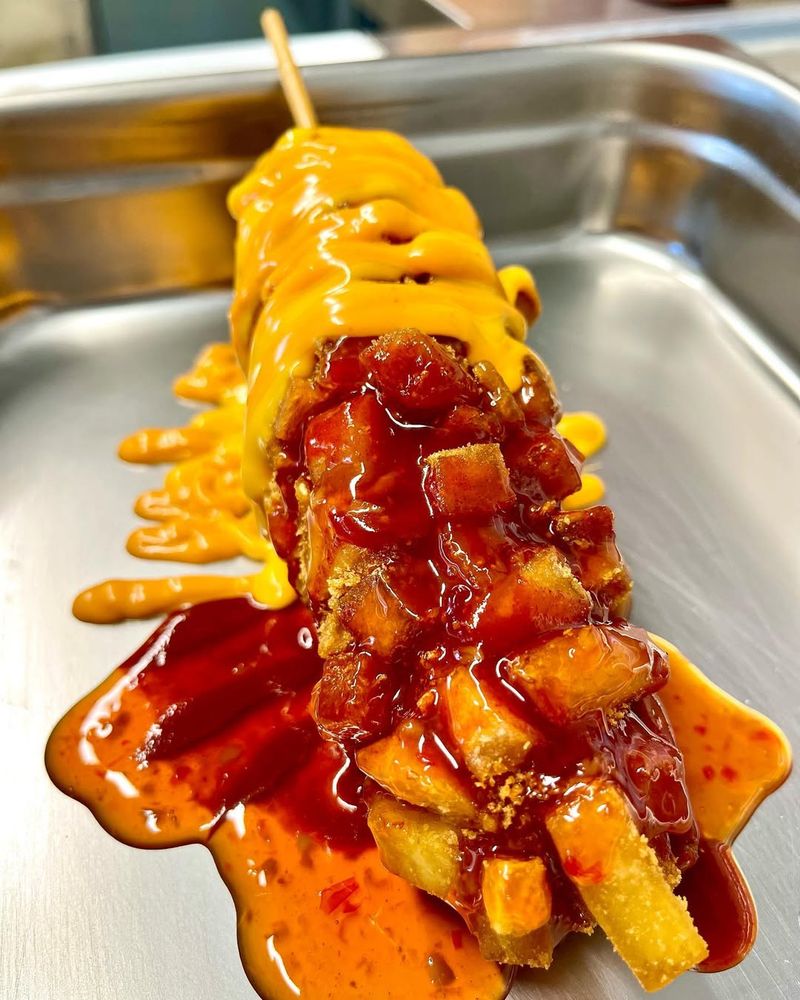
Buffet dishes drenched in sauce may seem appetizing, but the unknown can be dangerous. When you can’t identify what’s under the sauce—be it chicken, pork, or tofu—it’s a sign to proceed with caution.
Mystery sauces can mask not only the identity but also the freshness of the ingredients. This makes it easy for less-than-fresh items to be disguised, potentially leading to an unpleasant dining experience.
Opt for dishes where the contents are clear and identifiable. Your taste buds and stomach will thank you for making a more informed choice. When in doubt, transparency is key in your buffet selections.
13. Pasta Dishes Swimming in Cream Sauce
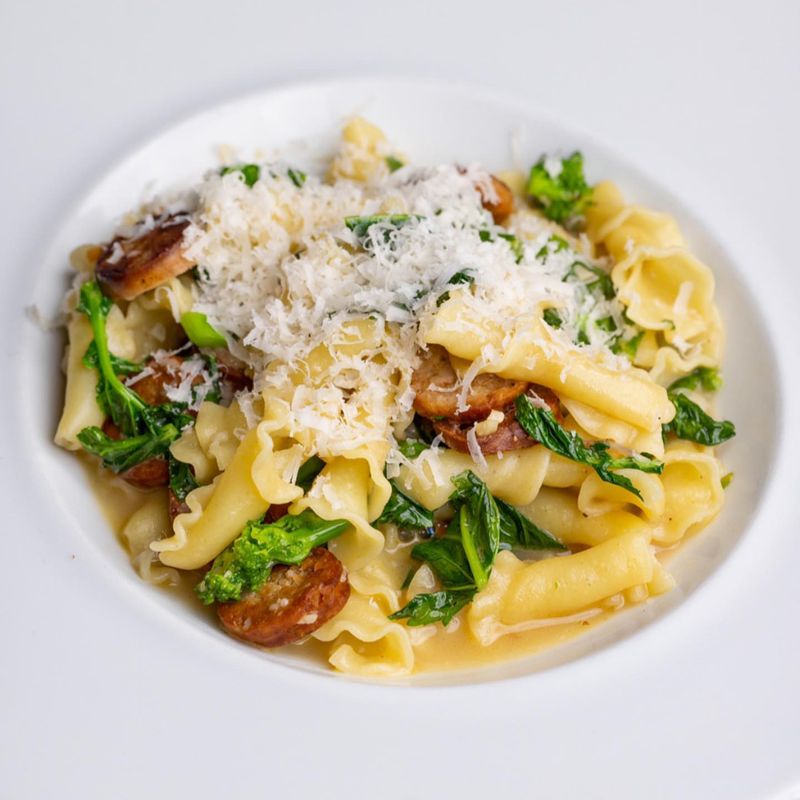
Pasta dishes, especially those swimming in cream sauce, can lose their appeal quickly under buffet heat lamps.
Cream sauces are prone to separation and spoilage, posing a food safety risk as they sit out. While the idea of creamy pasta might be mouthwatering, it’s best to stick to tomato-based alternatives at buffets, which fare better under heat.
The combination of dairy and heat can turn a delightful dish into a risky one. When in doubt, survey the pasta section for freshly replenished options or those that look well-maintained. Your palate and digestive system will appreciate your careful consideration.
14. Desserts with Whipped Cream Topping

A dollop of whipped cream can make any dessert look divine, but at a buffet, this topping can raise red flags. If whipped cream has been sitting at room temperature, it becomes a playground for bacteria and loses its fresh taste.
Many buffets use non-dairy whipped toppings filled with artificial fillers, further diminishing the quality. The risk of spoiling is high, especially when temperature control isn’t enforced. Consider choosing desserts that don’t rely on whipped cream or opt for those kept chilled.
Enjoying a sweet treat shouldn’t come with the risk of an upset stomach, so choose wisely.
15. Bread Pudding or Custard Desserts

Bread pudding or custard-based desserts can be delightful but are incredibly sensitive to temperature. Without proper refrigeration, these dishes become breeding grounds for bacteria, especially since they often contain eggs and dairy.
While they might be tempting, consider the potential health risks associated with unrefrigerated desserts. The creamy texture can quickly become a hazard if not kept at the right temperature.
Opt for desserts that are less perishable under buffet conditions or stick to those that are clearly fresh and well-maintained.
16. Any Food with Signs of Cross-Contamination

Cross-contamination is a common issue at buffets, where tongs and serving utensils often end up in neighboring dishes.
This can lead to unintended mixing of allergens or exposure to bacteria if hygiene isn’t prioritized. If you notice mixed-up tongs or someone handling food with bare hands, it’s a clear sign to avoid that dish.
Cross-contamination can transform seemingly safe foods into risky options. Always be observant of the serving conditions and choose dishes from areas that appear well-maintained and organized.
Your vigilance can help you enjoy a safer and more pleasant buffet experience.
Leave a comment